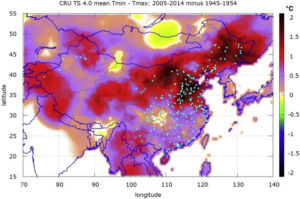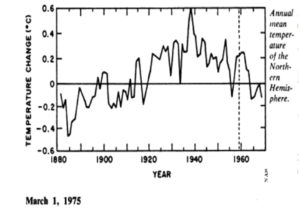by JoNova, July 24, 2019
The biggest changes in temperature (“divergence” in dark red brown Fig 6) occurred where the most people lived (blue dots). In the 60 years to 2010 China was reported to have warmed by 0.79 ± 0.10 °C. However Scafetta et al calculate at most, China could have experienced a real warming of only 0.46 ± 0.13 °C.
Somehow the combined might and supercomputers at NOAA, NASA, Hadley and the Bureau of Met experts all missed this.
It’s another third of a degree gone from the Glorious CO2 Narrative. Just like that.

Is there a more perfect nation to study the Urban Heat Island effect than China?
The worlds most populous nation has made a blistering transformation in two decades. As recently as 1995 the population was 75% rural. Now it’s approaching 60% urban. Shenzhen, which is near Hong Kong, grew from 3000 people in 1950 to more than 10 million in 2010. Around Beijing, thousands of towns have been built in a networked carpet, each a mere 2km apart (zoom in on Google satellite view). The stations in these areas are effectively not rural anymore.
…
See also here

